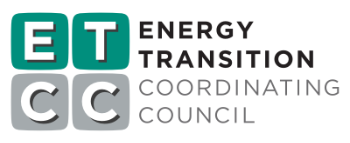Origins of ETCC
The ETCC originated as a coordination forum for the Emerging Technologies Program (ETP),a California statewide program that conducts projects focused on emerging and underutilized technologies to help customer program administrators identify prospective new measures or solutions. As efficiency measures become widely adopted and “low-hanging fruit” becomes sparse, finding new measures becomes increasingly important. ETP’s role is to help fill the pipeline of new energy efficiency (EE) measures by supporting technology development, validating the performance of emerging technologies (ETs) and conducting field demonstrations.
The ETCC traces its origins back to February 2000, when IOU ET leaders began informal quarterly meetings with CEC PIER program representatives to coordinate research. In early 2002, the California Public Utilities Commission (CPUC) authorized first dedicated program funding for each IOU’s portion of the statewide ETP, and formally recognized the Emerging Technologies Coordinating Council (ETCC).
Over the past two decades, the ETCC members’ interests and needs grew beyond emerging technologies to include understanding how technology adoption can be accelerated throughout a technology’s adoption lifecycle, from “early adoptions” to “laggards”. ETCC member utilities conduct and coordinate research that serves a spectrum of customer programs including not only EE and DR emerging technologies and incentive programs, but also market transformational programs such as Codes & Standards. In 2018, the CPUC directed the utilities to combine their ET programs into two Statewide programs, Gas Emerging Technologies Program and Electric Emerging Technologies Program, and that third party implementers be responsible for the design and implementation of these programs. Information about the Gas Emerging Technologies Program can be found here, and information about the Electric Emerging Technologies Program, branded as CalNEXT, can be found here.
In 2024, the ETCC rebranded as the “Energy Transition Coordinating Council” to retain the brand that has marked two decades of facilitated collaborations between ratepayer funded research organizations in support of California’s ambitious energy and demand savings goals.
